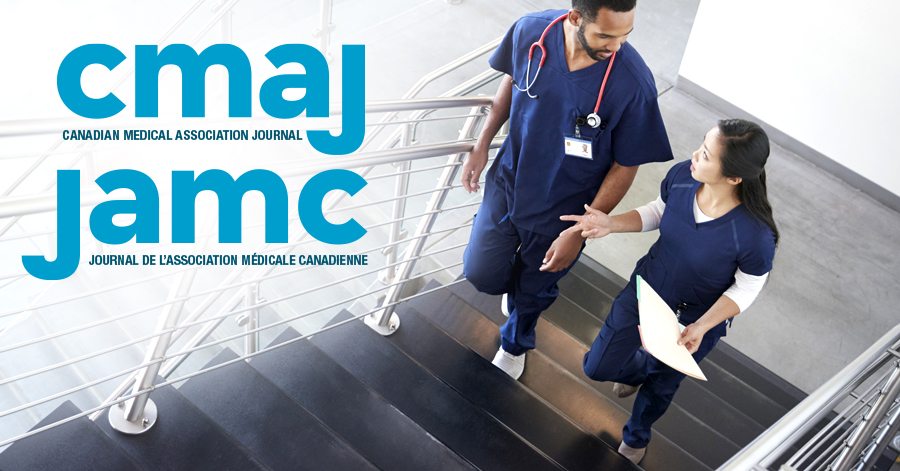Health
A practical approach to the diagnosis and management of chlamydia and gonorrhea

KEY POINTS
-
The incidence of chlamydia and gonorrhea, 2 common sexually transmitted infections, is increasing.
-
Annual asymptomatic screening for chlamydia and gonorrhea should be performed in all sexually active patients younger than 30 years, with more frequent screening for higher risk patients.
-
Nucleic acid amplification testing for chlamydia and gonorrhea should be performed in both asymptomatic and symptomatic patients at sites of sexual exposure, guided by a careful sexual history.
-
The treatment recommendations for chlamydia and gonorrhea are evolving and clinicians should follow local guidance.
-
Antimicrobial resistance in gonorrhea is increasing; optimal treatment should be guided by principles of antimicrobial stewardship.
The 2 most frequent reportable bacterial sexually transmitted infections (STIs) worldwide and in Canada are those caused by Chlamydia trachomatis and Neisseria gonorrhoeae.1,2 Rates of both infections have been increasing over the last decade despite public health efforts aimed at prevention, testing and treatment. In 2019, 139 389 cases of chlamydia and 35 443 cases of gonorrhea were reported in Canada, an increase of 33.1% and 181.7%, respectively, since 2010.2 These increases may reflect improved diagnostics, increased screening and contact tracing or a true increase in incidence.2
Sexually transmitted infections have a substantial impact on affected individuals and communities. Chlamydia trachomatis and N. gonorrhoeae are commonly implicated pathogens in pelvic inflammatory disease and, if untreated, can lead to infertility.3 Infection with a bacterial STI is associated with increased risk of HIV acquisition or transmission.4 Perinatal transmission of C. trachomatis and N. gonorrhoeae can lead to ophthalmia neonatorum in infants, among other pathologies.5 Treatment has become more challenging, given the increase in antimicrobial resistance in gonorrhea.6
We summarize the management of chlamydia and gonorrhea in primary care as health care providers work collectively toward the goal of decreasing the frequency of these infections and reducing associated morbidity through appropriate treatment. We draw on evidence from clinical practice guidelines, systematic reviews and meta-analyses (Box 1).
Box 1: Literature review
We conducted a targeted literature search of MEDLINE and Embase from inception to July 2022. Search terms included “Chlamydia trachomatis,” “Neisseria gonorrhoeae,” “sexually transmitted infection,” “STI,” “urethritis,” “cervicitis,” “pelvic inflammatory disease,” “proctitis,” “epididymitis,” “diagnosis,” “screening” and “treatment.” We limited the search to articles in English. Our targeted search focused on identifying clinical practice guidelines, systematic reviews and meta-analyses, although we did not place any formal restriction on article type. We selected relevant articles, and manually reviewed their references for additional articles.
Why is taking a good sexual history important?
Taking a sexual history is essential to comprehensive care in patients presenting with STI symptoms and in asymptomatic people to assess for STI risk, determine the need for screening, address concerns and provide sexual health education.
Patients have reported wanting their health care provider to inquire about sexual health, but many face considerable barriers to self-disclosure of their sexual history.7,8 Stigma is often associated with STIs. Providers conducting a sexual history should do so in a nonjudgmental, patient-centred and trauma-informed manner.9 Syndemics theory describes how disease interacts with social constructs, which can help conceptualize how a person’s unique social, cultural and health context influences how they access STI care.10 Establishing the patient’s pronouns, sexual orientation and gender identity is necessary to create an environment of respect and trust. The components of a sexual history can be remembered by the 5 Ps: partners, practices, protection, past history and pregnancy (Table 1).11
Table 1:
Approach to taking a sexual history*11
What are common clinical presentations?
Most chlamydia and gonorrhea infections cause no symptoms.12 If symptoms develop, the incubation period for gonorrhea is 2–7 days, compared with 2–6 weeks for chlamydia.13 Chlamydia and gonorrhea may have genital or extragenital symptoms, which are generally reflective of the site of infection. The clinical presentations of chlamydia and gonorrhea overlap, and they are usually clinically indistinguishable.
Genital symptoms
Urethritis is the most common syndrome in patients with a penis who are symptomatic. It is characterized by dysuria, urethral pruritis and discharge. Most cases of infectious urethritis are caused by C. trachomatis and N. gonorrhoeae or both. However, in almost half of cases of nongonococcal urethritis, no specific organism is identified despite extensive microbiological investigation (Box 2).14
Box 2: Infectious differential diagnosis of common clinical presentations of sexually transmitted infections
Urethritis
-
Neisseria gonorrhoeae
-
Chlamydia trachomatis
-
Mycoplasma genitalium
-
Trichomonas vaginalis
-
Neisseria meningitidis
-
Hemophilus spp.
-
Herpes simplex virus
-
Adenovirus
Cervicitis
-
Chlamydia trachomatis
-
Neisseria gonorrhoeae
-
Trichomoniasis
-
Herpes simplex virus
-
Mycoplasma genitalium
-
Bacterial vaginosis
Proctitis
Epididymitis
Patients can develop acute epididymitis from chlamydia or gonorrhea, which is characterized by unilateral, posterior testicular pain and swelling, often accompanied by symptoms of urethritis. Among men younger than 35 years, C. trachomatis and N. gonorrhoeae are the most common causative organisms, but among older men and men who engage in insertive anal intercourse, causative agents can include enteric organisms like Escherichia coli.15
Although cervicitis is often asymptomatic, symptoms may occur and include abnormal vaginal discharge or intermenstrual bleeding.16 Findings on physical examination include purulent endocervical discharge or sustained endocervical bleeding. Most cases of cervicitis have no identified cause. In as many as 25% of cases, C. trachomatis or N. gonorrhoeae is identified.17 In around 15% of female patients, pelvic inflammatory disease can develop, characterized by abdominal or pelvic pain, dyspareunia or abnormal uterine bleeding, with findings of cervical motion or adnexal tenderness on physical examination.18 Patients may have infertility as a consequence of pelvic inflammatory disease. An uncommon complication of pelvic inflammatory disease is Fitz–Hugh–Curtis syndrome, characterized by right upper quadrant pain related to inflammation of the liver capsule.17
Extragenital symptoms
Proctitis caused by chlamydia or gonorrhea may present with tenesmus, anorectal pain, bleeding and mucopurulent discharge. These infections typically occur in patients who engage in receptive anal sex, but can also be transmitted from the vagina to the anal canal.19 Chlamydia trachomatis and N. gonorrhoeae are the most commonly identified pathogens in cases of infectious proctitis.20
The lymphogranuloma venereum (LGV) serovars (L1, L2, L3) of C. trachomatis can cause invasive infections that preferentially affect lymphatic tissue. Lymphogranuloma venereum can present as small painless ulcers or painful hemorrhagic proctitis, with complications including anal fistulae and strictures.21 In the last 2 decades, LGV has emerged as an important cause of proctitis among men who have sex with men (MSM) in North America and Europe.22
Oropharyngeal infections with gonorrhea are commonly asymptomatic, although patients can present with sore throat, pharyngeal exudate or cervical lymphadenitis.23 Chlamydia is not an important cause of pharyngitis.24
Although uncommon, gonorrhea infection can cause bacteremia, leading to septic arthritis or disseminated gonococcal infection, with tenosynovitis, dermatitis or polyarthralgias.23 Reactive arthritis — characterized by polyarthritis, conjunctivitis or uveitis, and urethritis or cervicitis — can occur after an infection with chlamydia or gonorrhea, although chlamydia is the more common inciting infection.25
Who should be screened for infection?
Opportunistic screening is critical in identifying asymptomatic chlamydia and gonorrhea infections. The Canadian Task Force on Preventive Health Care recommends annual opportunistic screening for chlamydia and gonorrhea in all sexually active people younger than 30 years.26 Although based on low-quality evidence, an opportunistic approach to screening is likely to increase the number of STIs diagnosed and destigmatize sexual health conversations.
More frequent screening should be offered to people at higher risk of acquiring STIs, although little evidence exists to guide the optimal frequency of screening. Among MSM, current guidance suggests, at minimum, anatomic site-based screening for chlamydia and gonorrhea annually.13,24 More frequent screening (i.e., every 3–6 months) is recommended for at-risk people of any gender within groups who may be disproportionately affected by STIs, including those taking HIV pre-exposure prophylaxis (PrEP), those who have recently had an STI, those living with HIV or those with multiple sexual partners.13,24,27 One cohort study of 557 MSM and transgender women taking HIV PrEP found that semiannual STI screening would have led to delayed diagnosis in more than 30% of patients with chlamydia or gonorrhea, compared with quarterly screening.28 Pregnant patients should be screened at their first prenatal visit, with rescreening in the third trimester if they initially test positive for or are at ongoing risk of STIs.13,24
Clinicians should determine appropriate anatomic sites for screening based on information from the sexual history, although they should consider screening extragenital sites (i.e., rectum and oropharynx), even in the absence of either reported symptoms or sexual exposures. Studies of people attending STI clinics have found that a considerable proportion of STIs are missed when STI testing is conducted only for patients with reported symptoms or on sites with known exposure, or when testing includes only urine.29,30 Testing for gender-diverse patients will depend on their specific anatomy.
How should patients be tested?
In asymptomatic patients, approaches to sample collection for nucleic acid amplication testing (NAAT) for chlamydia and gonorrhea include a first-void urine (first 10–20 mL, any time of day, at least 1 hour since previous void) or vaginal swab; other options include a urethral or cervical swab (Table 2). In patients with a vagina, a vaginal swab is preferred over first-void urine, as urine testing may detect 10% fewer infections.31 Those with a neovagina or gender-affirming penile reconstruction should provide a urine sample for NAAT. Extragenital testing options include a pharyngeal or rectal swab for chlamydia and gonorrhea NAAT. In symptomatic patients, first-void urine and swabs of sites of reported symptoms should be collected for chlamydia and gonorrhea NAAT, and for gonorrhea culture and sensitivity testing. Patient-collected swabs are acceptable, as studies have shown equivalence between self-and clinician-collected oral, vaginal and rectal swabs for chlamydia and gonorrhea testing.32,33 Self-collection may also improve uptake of STI screening.13,24
Table 2:
Testing for chlamydia and gonorrhea
Clinicians should refer to their local microbiology laboratories for recommendations on collection and transport protocols in their region. First-void urine can be collected in a sterile urine container for chlamydia and gonorrhea NAAT. The swabs contained within chlamydia and gonorrhea NAAT kits can be used on the cervix, urethra, vagina, throat or rectum; swabs from these sites can also be sent for gonorrhea culture. Bacterial culture for chlamydia is not routinely performed in Canada.13
Genotyping of LGV serovars can be requested if a patient presents with a syndrome consistent with LGV.13 Some Canadian jurisdictions will automatically test all positive rectal chlamydia swabs for LGV serovars. However, it is important to indicate suspicion for LGV on laboratory requisitions, as automatic LGV testing is not universal, and nonrectal specimens (e.g., genital ulcers) are not automatically tested.
How should patients be treated?
Gonorrhea
Treatment of gonorrhea is challenging, as it readily develops antimicrobial resistance, and guidelines are not congruent in their recommendations. The Canadian STI guideline recommends dual therapy with ceftriaxone or cefixime, plus azithromycin or doxycycline (Table 3).13 The STI treatment guideline from the United States Centers for Disease Control and Prevention (CDC) increased the previously recommended ceftriaxone dose (Table 3).24 The CDC also recommended against dual therapy based on increasing antimicrobial resistance, and concern for impacts on the microbiome and selective pressure on other pathogens.24 It is likely that this approach will be adopted by guidelines from other jurisdictions in the future. If monotherapy with ceftriaxone is used, an increased dose of ceftriaxone is recommended, compared with that used in dual therapy (Table 3).24 Currently, given varying recommendations, clinicians should follow local guidance, which will be based on resistance patterns in their area.
Table 3:
Treatment of chlamydia and gonorrhea
Chlamydia
The Canadian STI guideline recommends doxycycline or azithromycin as the first-line (preferred) treatment for chlamydia,13 whereas the CDC recommends doxycycline as first-line treatment, with azithromycin as a second-line (alternate) regimen (Table 3).24 The preference for doxycycline is based on a systematic review and meta-analysis comparing treatment with azithromycin and doxycycline for chlamydia, which found that treatment failed more often with azithromycin, particularly among men with rectal chlamydia.34,35 Thus, doxycycline is the preferred agent for treating rectal chlamydia. If adherence to therapy is a concern, single-dose azithromycin may be preferred. For pregnant patients, azithromycin is the first-line treatment.13 For patients with suspected or confirmed LGV, treatment with doxycycline should be continued for 21 days.13
Other treatment considerations
Given the potential complexity of cases and the evolving treatment landscape, providers should consult with an expert in STI management when necessary. All patients being treated for chlamydia or gonorrhea should be strongly advised to abstain from sexual activity for 7 days after treatment and until all partners have been treated.13 Sexual partners from the previous 60 days should be tested and treated, or offered expedited partner treatment (i.e., clinicians can provide empiric treatment for the patient to give to their partner), which has been found to reduce the rates of recurrent or persistent infection.36 Details around indications and timing of tests of cure are discussed in Table 3. Tests of cure and repeat screening recommendations are often not followed, although they remain important for the appropriate care of the patient and to decrease transmission.37
What about antimicrobial resistance?
Globally and in Canada, rates of antimicrobial resistance in N. gonorrhoeae are increasing, with decreasing susceptibility to cephalosporins and azithromycin.6,38 In Canada, between 2012 and 2016, the proportion of multidrug resistant N. gonorrhoeae increased from 6.2% to 8.9%, with most isolates identified in Ontario and Quebec.39 Actions that clinicians can take to combat antimicrobial resistance are to perform gonorrhea culture and sensitivity testing when possible to limit unnecessary antimicrobial use, and to forgo dual therapy for gonorrhea when chlamydia is excluded. Whether the widespread discontinuation of dual therapy for gonorrhea would negatively affect clinical outcomes or prevent antimicrobial resistance has not yet been established, however. Treatment can be delayed until test results are available in situations where reliable patient follow-up is likely. In cases of confirmed or suspected multidrug-resistant N. gonorrhoeae, clinicians should consider consulting an expert in the management of STIs.
Conclusion
Chlamydia and gonorrhea are the most common bacterial STIs in Canada, and their incidence is increasing.2 Most infections are asymptomatic, which highlights the importance of routine screening for people who are sexually active.26 Screening and diagnostic testing in symptomatic patients should be guided by a comprehensive sexual health history, which also provides an opportunity for patient education around sexual health. However, the optimal screening frequency in different populations remains unclear. With increasing rates of antimicrobial resistance, treatment should be guided by adherence to the principles of antimicrobial stewardship.
Acknowledgements
The authors gratefully acknowledge that they live and work on the ancestral, traditional and unceded territory of the Coast Salish peoples, including the Musqueam, Squamish and Tsleil-Waututh Nations.
Footnotes
-
Competing interests: Troy Grennan is Vice-chair of the Public Health Agency of Canada’s National Advisory Committee on Sexually Transmitted and Blood-Borne Infections and holds a Health Professional Investigator Award from Michael Smith Health Research BC. No other competing interests were declared.
-
This article has been peer reviewed.
-
Contributors: All of the authors contributed to the conception and design of the work. Clara Van Ommen drafted the manuscript. All of the authors revised it critically for important intellectual content, gave final approval of the version to be published and agreed to be accountable for all aspects of the work.
This is an Open Access article distributed in accordance with the terms of the Creative Commons Attribution (CC BY-NC-ND 4.0) licence, which permits use, distribution and reproduction in any medium, provided that the original publication is properly cited, the use is noncommercial (i.e., research or educational use), and no modifications or adaptations are made. See: https://creativecommons.org/licenses/by-nc-nd/4.0/

Health
Carb Lover’s Keto

Product Name: Carb Lover’s Keto
Click here to get Carb Lover’s Keto at discounted price while it’s still available…
All orders are protected by SSL encryption – the highest industry standard for online security from trusted vendors.

Carb Lover’s Keto is backed with a 60 Day No Questions Asked Money Back Guarantee. If within the first 60 days of receipt you are not satisfied with Wake Up Lean™, you can request a refund by sending an email to the address given inside the product and we will immediately refund your entire purchase price, with no questions asked.
Health
365 Daily Health NEWSHOUR:

Product Name: 365 Daily Health NEWSHOUR:
Click here to get 365 Daily Health NEWSHOUR: at discounted price while it’s still available…
All orders are protected by SSL encryption – the highest industry standard for online security from trusted vendors.

365 Daily Health NEWSHOUR: is backed with a 60 Day No Questions Asked Money Back Guarantee. If within the first 60 days of receipt you are not satisfied with Wake Up Lean™, you can request a refund by sending an email to the address given inside the product and we will immediately refund your entire purchase price, with no questions asked.
Health
DetoxilBurn


Product Name: DetoxilBurn
Click here to get DetoxilBurn at discounted price while it’s still available…
All orders are protected by SSL encryption – the highest industry standard for online security from trusted vendors.

DetoxilBurn is backed with a 60 Day No Questions Asked Money Back Guarantee. If within the first 60 days of receipt you are not satisfied with Wake Up Lean™, you can request a refund by sending an email to the address given inside the product and we will immediately refund your entire purchase price, with no questions asked.
-

 Business23 hours ago
Business23 hours agoJapanese owner of 7-Eleven Seven & i Holdings rejects Couche-Tard takeover offer
-

 News13 hours ago
News13 hours agoCanada surpasses gold, total medal count from Tokyo Paralympics on Day 9
-

 Economy21 hours ago
Economy21 hours agoRecent immigrants shut out of strong wage growth as unemployment rises in Canada
-

 Real eState21 hours ago
Real eState21 hours agoMontreal home sales, prices rise in August: real estate board
-

 News19 hours ago
News19 hours agoClinton Orr & Jodi Ruta are Committed to Strengthening the Beausejour, Manitoba Community
-

 News12 hours ago
News12 hours agoCanadian resident arrested in Quebec over alleged New York terror plot
-

 Health8 hours ago
Health8 hours agoHeal Your Dog Naturally
-
Health22 hours ago
Awaken XT – Happiness and Abundance



















